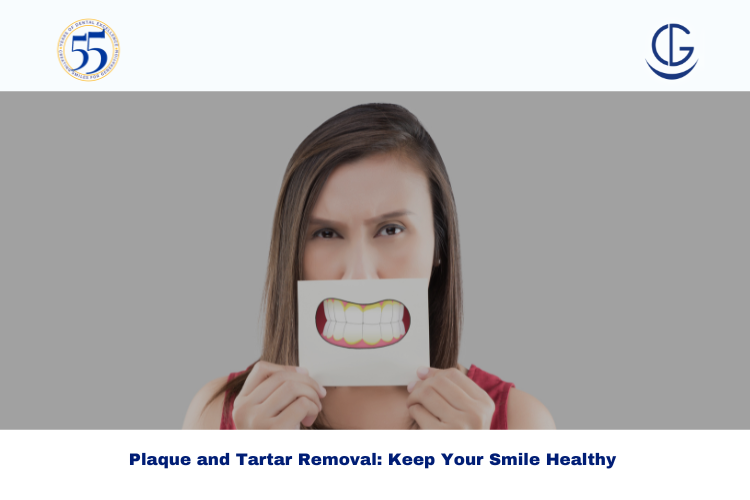Schedule Appointment




At Dr Gowds Dental Hospital in Hyderabad, we believe that plaque and tartar removal is one of the most important steps you can take to protect your smile. Whether you’re getting teeth plaque removal or exploring tartar teeth removal options, understanding how plaque and tartar develop—and how to combat them—can make a huge difference in your lifelong oral health.
In this post, we’ll answer what plaque and tartar are, show you practical removal methods, and explain why regular professional cleaning (at a dental hospital in Hyderabad) is essential. We’ll also highlight when you should consult a dental specialist in Hyderabad (Prof. Dr. M.S. Gowd) for more advanced care.
Plaque is a soft, sticky film laden with bacteria that forms constantly on your teeth. It emerges after eating and lingers, feeding on food particles, especially sugars and starches. If you don’t remove it, plaque can lead to gum inflammation (gingivitis), cavities, and bad breath.
When plaque is left untreated for too long, minerals in saliva combine with the plaque and harden it into tartar (also called calculus). Once that happens, the deposit is firmly attached to the tooth surface and is much more difficult to remove without professional tools. This is often referred to as hard plaque on teeth.
| Feature | Plaque | Tartar (Calculus) |
| Texture | Soft, sticky | Hard, crusty |
| Removal | Can be removed by brushing/flossing | Needs professional tools |
| Time to develop | Within hours | Days to weeks if plaque remains |
| Risk | Cavities, gum irritation | Advanced gum disease, worse decay |
Understanding the difference between plaque vs tartar helps you see why early removal is vital.
1. Prevent Gum Disease
Plaque harbors bacteria that irritate gum tissues. If plaque evolves into tartar, it can push gums away from teeth, creating pockets where bacteria thrive—leading to periodontitis in severe cases.
2. Reduce Risk of Cavities
Bacteria in plaque produce acids that erode enamel. By removing plaque early (plaque removal from teeth), you reduce the acid attack.
3. Maintain Fresh Breath
The bacteria that live in plaque and tartar create foul-smelling byproducts, causing chronic bad breath (halitosis).
4. Avoid Tooth Loss
Long-term unchecked tartar and gum disease can erode bone and connective tissues, potentially causing tooth mobility and loss.
5. Aesthetic Benefits
A clean tooth surface looks brighter and healthier than one coated with yellowish tartar layers.
You can’t remove tartar in a home setting, but you can stay on top of plaque:
These habits slow or prevent plaque buildup and reduce the chances of it turning into tartar.
Once plaque has mineralized into tartar teeth removal requires specialized care. Here’s what happens during a typical professional cleaning:
For moderate to severe cases, additional therapies (e.g. root planing, antibiotics, or gum surgery) may be recommended.
If hard plaque on teeth is visible (yellowish or brown crust), over-the-counter methods won’t work.
Regular plaque and tartar removal is fundamental to keeping your teeth and gums healthy. While you can control teeth plaque removal at home with good brushing, flossing, and diet, tartar teeth removal requires professional tools and expertise. Ignoring plaque until it hardens into tartar makes treatment more invasive and costly.
If you see signs of persistent hard plaque on teeth, bleeding gums, or gum recession, don’t delay. Reach out to a dental hospital in Hyderabad. Consulting with a dental specialist in Hyderabad (Prof. Dr. M.S. Gowd) ensures you receive expert evaluation and tailored treatment.
Oral health is a lifelong journey—be proactive, maintain your cleaning routine, and rely on specialists when necessary. Your smile (and your overall health) will thank you.
Plaque is a soft, sticky film of bacteria that forms on your teeth daily. Tartar (also called calculus) is hardened plaque that occurs when minerals in saliva bond with plaque. Tartar can only be removed by a dental professional.
For most people, a professional cleaning every six months is recommended to control tartar buildup. If you have gum disease or heavy plaque formation, your dentist may advise more frequent cleanings.
No—tartar teeth removal needs professional tools and training. Attempting to scrape it yourself may damage enamel or gums. Stick to at-home plaque control and visit your dental specialist.
Dr Gowds Dental Hospital, led by Prof. Dr. M.S. Gowd and his team offers advanced facilities, decades of expertise, and comprehensive preventive care including safe plaque removal and scaling. Their reputation as a trusted dental hospital in Hyderabad makes them a reliable choice.
Maintain diligent oral hygiene—brush twice daily, floss, use mouthwash, and eat a balanced diet low in sugars. Also, return for regular checkups at a dental specialist in Hyderabad to catch early plaque before it turns into tartar.